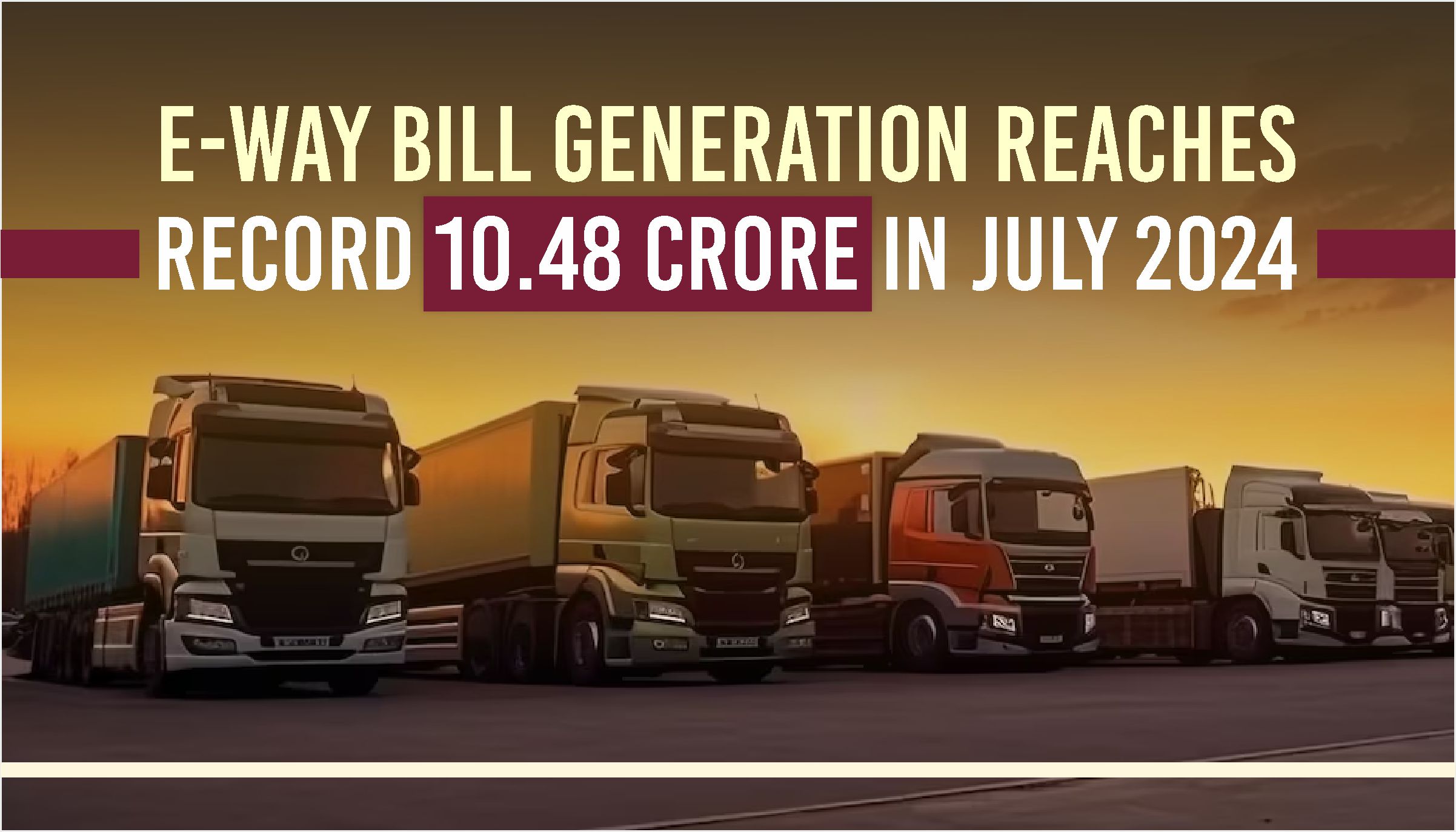E-way Bill Generation Reaches Record 10.48 Crore in July 2024

The generation of e-way bills in India hit a record high in July, reaching 10.48 crore, as per data released by the GST Network (GSTN). This marks the fifth instance since the inception of the e-way bill system in 2018 and the third consecutive month in the current fiscal year where e-way bill generation has exceeded 10 crore. This surge surpasses the previous peak of 10.35 crore recorded in March this year, indicating a significant uptick in economic activities.
Understanding E-way Bills and Their Significance
An e-way bill is an electronic document that is required for the movement of goods across India. Introduced as part of the Goods and Services Tax (GST) regime, it serves as proof of compliance with GST laws, ensuring that taxes are duly paid on goods being transported. Under Rule 138 of the Central Goods and Services Tax (CGST) Rules, 2017, any registered person involved in the movement of goods valued at more than ₹50,000 is mandated to generate an e-way bill. This requirement applies to both inter-state and intra-state movement of goods, although the threshold may vary for intra-state transactions based on state-specific rules.
Reasons Behind the Record Surge
While the GSTN has not specified the exact reasons for the increase, several factors are believed to contribute to this trend:
- Improvement in Consumption: The rise in e-way bill generation reflects an increase in consumption across various sectors. As economic activities resume post-pandemic, there is a growing demand for goods and services, leading to increased transportation of goods.
- Enhanced Compliance: With technological advancements and stricter scrutiny by tax authorities, businesses are more vigilant about adhering to GST compliance requirements. This has led to a higher rate of e-way bill generation as businesses ensure they meet all necessary documentation criteria.
- Economic Activity and Inflation: The increase in e-way bill generation is also indicative of higher economic activity. Core inflation (inflation excluding food and fuel) rose to 3.4% in July from 3.1% in June, suggesting a revival in demand. This rise in inflation aligns with the increase in e-way bills, as higher demand typically leads to increased movement of goods.
- Government Initiatives and Monitoring: The government’s continuous efforts to monitor and regulate the transportation of goods through digital means have also played a role in boosting e-way bill generation. Regular updates and improvements in the e-way bill system have made it easier for businesses to comply with the regulations.
Impact on GST Collections
Although there is no direct correlation between e-way bill generation and GST collections, the former can have a positive impact on the latter. E-way bills serve as an indicator of goods movement, which, in turn, can influence GST revenues. The tax collected for goods consumed and services availed in July will be disclosed on September 1, when the government releases the monthly GST collection data. Historically, higher e-way bill generation has been associated with robust GST collections, reflecting increased economic activity and compliance.
What the Rising Numbers Mean
The surge in e-way bill generation is a positive sign for the Indian economy, suggesting a revival in demand and consumption. This trend is crucial for sustaining economic growth. The following points highlight the significance of this surge:
- Increased Demand for Logistics Services: The rise in e-way bills indicates a growing demand for transportation and logistics services, as businesses move goods across the country to meet rising consumer demand. This is a positive indicator for the logistics sector, which plays a vital role in supporting economic activities.
- Boost in Manufacturing and Trade: Higher e-way bill generation is indicative of increased manufacturing and trade activities. As businesses ramp up production to meet demand, there is a corresponding increase in the movement of goods, leading to higher e-way bill generation.
- Compliance and Transparency: The surge also reflects the effectiveness of technology-driven scrutiny and compliance mechanisms. With advancements in digital infrastructure and regulatory frameworks, businesses are becoming more compliant with GST regulations, enhancing overall transparency in the tax system.
- Indicator of Economic Recovery: The consistent increase in e-way bill generation over the past few months suggests that the Indian economy is on the path to recovery. As businesses resume operations and consumer demand picks up, the transportation of goods is expected to continue rising, further boosting economic growth.
The record high in e-way bill generation in July is a significant milestone for the Indian economy. It not only reflects an increase in consumption and economic activities but also highlights the importance of compliance and transparency in the GST regime. As the country moves forward, the continued growth in e-way bill generation will be a key indicator of economic recovery and stability, providing valuable insights into the health of the economy and the effectiveness of government initiatives.
